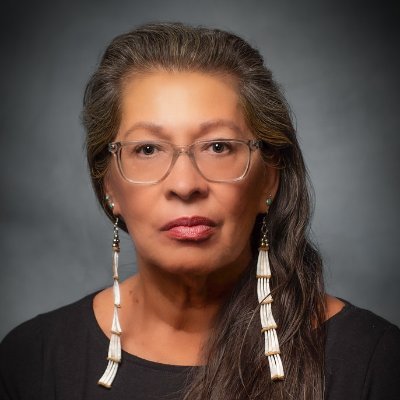
- Details
- By Elyse Wild
Navajo citizens will gather outside of the Nation's Council Chambers in Window Rock, Ariz., to pray for healing and urge lawmakers to reauthorize and expand the Radiation Exposure Compensation Act, which paid out a total of $372.6 million to Native Americans exposed to radiation from the United States' development and testing of nuclear weapons.
For decades, the federal government mined uranium, a naturally occurring radioactive metal that fuels nuclear power, on the Navajo Nation. Nearly 30 million tons of uranium were mined on the reservation from 1944 to 1986, according to the Environmental Protection Agency — enough to fill the Empire State Building 12,000 times. As well, the United States conducted nearly 200 atmospheric nuclear weapons development tests in the Southwest from 1945 to 1962. Radiation exposure is linked to an array of serious illnesses, including kidney disease, various cancers, and respiratory disease.
Signed into law in 1990, RECA provided lump-sum payments ranging from $50,000 to $100,000 to uranium workers, on-site nuclear weapons staff and "downwinders," or individuals who lived downwind of a nuclear testing site in Nevada. A bill that would have renewed and expanded RECA passed the Senate last March with a vote of 69-30. It died in the house and thus expired, despite pleas from Native communities and advocates.
Lorie Sekayumptewa (Diné, Sac&Fox, Hopi) is one of the organizers behind the June 10th event. Many of her relatives are afflicted with chronic and terminal health issues, and dozens have died of cancer. She has rheumatoid arthritis and a degenerative spine disease.
"I don't know how much more Indigenous people have to continue to pay the price," Sekayumptewa told Native News Online. "Our lands are totally polluted, and we have to live with this sickness and illness with barely any healthcare."
RECA provided compensation for a range of illnesses, depending on which category people fall under — miners, on-site workers, or downwinders. In a public statement published last June before RECA expired, Navajo Nation President Buu Nygren called the list of diseases covered "woefully incomplete." As well, claimants bore the burden of proof that their disease could be directly linked to uranium exposures from mining or nuclear testing activities. Sekayumptewa said that for a community with limited access to healthcare, that can be nearly impossible.
"It's not like you can't get cancer and say, 'Oh yeah, I'm going to go apply for RECA because it's from the radiation. It's years of this accumulated medical history that you have to justify," she said. "You may not realize that you were exposed."
There are more than 500 abandoned uranium mines on or near the Navajo reservation that span Arizona, New Mexico and Utah, according to the EPA. Thousands of Diné worked in the mines. Many people on the reservation have stories of relatives — men, women and children — who worked in the mines and died of cancers and lung and kidney disease.
The ubiquity of uranium in the Navajo Nation is chilling. In 2016, 13% of springs, wells, and water storage tanks in the Navajo Nation tested positive for unsafe levels of the metal. 85% of Navajo homes are contaminated by it. As Sekayumptewa describes it, exposure is hard to escape.
"I immersed myself growing up in water in the spring," she said. "I would get the water for breakfast, water to wash the dishes with, water for ceremonial use, water for everything."
Advocates are pushing for RECA to be reauthorized and expanded downwind coverage to include more areas of Utah and Arizona, and
Colorado and parts of New Mexico. Sekayumptewa also said compensation should be increased.
"For someone with cancer. $50,000 is a drop in the bucket," she said.
More Stories Like This
Lawmakers Vow to Restore Tribal Healthcare Protections Cut by Trump AdministrationTrailblazer American Indian Dentist Dr. George Blue Spruce Jr. Passes Away at 94
Coquille Indian Tribe Partners with Oregon to Expand Veterans Services
Native Americans Hurt by Federal Health Cuts, Despite RFK Jr.’s Promises of Protection














